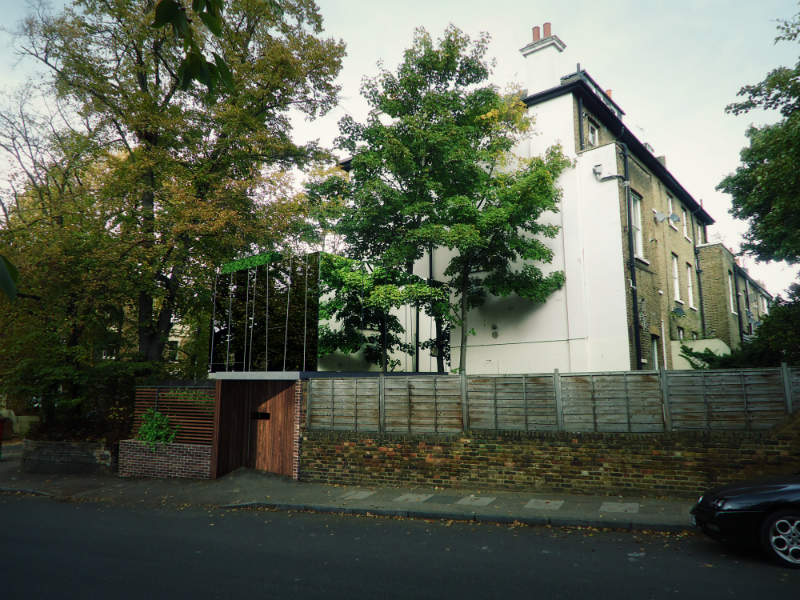
The launch of Tesla’s Powerwall 2 on to the market has been something of a game-changer for the home power storage landscape. The price of battery power has dropped significantly over the last few years, making the prospect of home energy storage more feasible than ever before. Yet while the market is heating up with competition from manufacturers such as Sonnen, LG, Powervault, Moixa and SMA, the Powerwall 2, with 13.5kWh capacity, is turning heads.
Despite being half the size with a 6.5kWh inverter, Ikea’s recently-launched power and battery storage system will up the game even more, especially as Ikea claims homeowners could see their electricity bills cut by up to 70%.
“I certainly think Tesla’s Powerwall is the market leader at the moment, and the reason for that is the unit price,” says Chris Jardine, technical director and founder of Joju Solar, one of the UK’s most prolific solar and battery installation companies. “The amount of storage you get for your money is really the cheapest on the market.”
He adds: “What we’re seeing in the market is if you can get a 6KWh unit from another manufacturer or 13kWh for same the price, people will go for the 13kWh Tesla because of the brand value.”
While this may be the case, under-using battery capacity is economically inadvisable (Jardine says his main concern with Ikea’s battery is that they are selling it off the shelf without sizing the battery to customer demand) so that is why Joju’s expertise as “systems designers” is crucial to getting an optimised system.
Pure economic benefits almost here
The Joju team recently installed three Sonnen Eco 8 4kWh batteries to store power from Turner Hill Primary School’s funded solar panels. During the spring, summer and autumn months the school uses barely any electricity from the grid and runs on its own solar-generated electricity. Consumption of grid electricity has tumbled from 150kWh per day to just 6 kWh on a bright sunny day, after installing PV and batteries.
How well do you really know your competitors?
Access the most comprehensive Company Profiles on the market, powered by GlobalData. Save hours of research. Gain competitive edge.

Thank you!
Your download email will arrive shortly
Not ready to buy yet? Download a free sample
We are confident about the unique quality of our Company Profiles. However, we want you to make the most beneficial decision for your business, so we offer a free sample that you can download by submitting the below form
By GlobalData“You can see quite clearly on the graph for Turner Hill school that the batteries start full at 6 in the evening and are they’re just about empty as the sun comes up the next morning and charges them up, so that is perfect sizing,” says Jardine. “There is a little bit more to batteries than just buying them off the shelf; they are a system component and they need to match up with everything else.”
While Jardine works with schools, community centres, businesses and homeowners, he says that pure economic benefits for home owners have not quite arrived yet in the marketplace, but that will start in the next couple of years.
Interested consumers currently tend to be a mix of those excited about installing smart electricity systems in their homes, solar households wishing to store their unused daily energy and those who wish to live off-grid.
Architect collaboration still on higher-end projects
“When architects approach us, it tends to be for higher-end projects – perhaps they’re making a building that is 100% sustainable – as the majority of people are looking into it on a more experimental basis,” says Jardine.
The main reason for this is cost. “Most building contractors are heavily price-focused and putting in a £5,000 battery is adding £5,000 to the cost of a house, which the developer doesn’t see a way of clawing back,” he says.
This is also the experience of architecture practice JaK Studio, which designed and built the ‘Invisible House’, a two-bedroom eco-house on the site of two derelict garages in Brockley, London. On the first floor a high reflective glass ‘mirror box’ camouflages the living accommodation amongst its leafy surroundings and solar panels provide the property with renewable energy sources for heat and power.
The property is still under construction and the implementation of a battery storage system is being considered.
JaK Studio creative director and architect Nedzad Sahovic says demand is rising among clients who want to incorporate sustainability and power generation into the design of a property from the beginning.
Demand rises as prices drop
“There are a couple of reasons why,” says Sahovic. “First, there is much more awareness about the environment and technology has improved greatly over the last decade. There is also a lot more competition than before, so prices have dropped significantly in the last decade or two.”
Sahovic says that although the advantages are more ecological than economical at the moment, they will be economical in the future as the market continues to develop.
In terms of best practice on how to work with clients on sustainable power systems, the JaK Studio team prefers to incorporate any such plans into their designs as early on in the process as possible. “You have to collaborate with a specialist early on, so we can get the dimensions of the solar panels and the batteries, to get it right in the first place, even before the planning approval,” he explains. “Then after we go into the detailed design of every specification.”
Implementing power generation and storage systems late on in the project is frustrating for everyone, he says, although this is a problem the Joju Solar team encounters more often than they would like.
“There’s a danger that you design a building and then add the green tech at the end,” says Jardine. “We’d like the green tech to be considered in a more holistic way – it is a system design that requires quite a bit of thought and early integration into the design process.”
Design aspects for consideration
Layout isn’t the only consideration when planning a solar panel installation; Jardine says there are plenty of other elements that architects need to factor in.
These include structural engineering (such as weight, wind loading and mounting structure); electrical engineering (like the inverter specification and wiring run); cost optimisation; aesthetics; buildability (taking the ease of the build and logistics into consideration); and shading (shade on one module can negatively impact the performance of a whole string of modules).
While battery storage technology is approaching the gateway to a mainstream future, many architects still have limited experience working with such systems. But architects should be starting to think about incorporating these systems into their projects in the future.
“The wise thing to do would be for every architect to try out a battery of some sort in a project and see how it gets on because the market is going to come,” Jardine advises. “We’ve seen how architects have become familiar with solar over the last ten years, and now batteries for storage, electric vehicle charging and other technologies are integral to the home of the future.”
UK government supporting battery tech growth
The UK government recently announced £246m worth of investment to boost expertise in and “scale-up” battery technology. Jardine says it’s unclear the kind of scale that is being looked at – whether more large-scale industrialised projects or small-scale meters individual homes – but this new focus on battery technology could be the catalyst for producing more mainstream home-owning consumers in the future.
Enquiries to Joju also show there’s reasonable interest from families wishing to use battery storage as a back-up facility (which isn’t possible yet in the UK), but also from those looking at the systems as a way to create an additional revenue stream: simply buying cheap, storing it and selling it back to the grid for a higher price.
“At current prices and in current policy environment that’s not going to be the case,” says Jardine. “But as prices come down and with some more supportive policies, such as enabling batteries to provide emergency power back to the grid, demand will increase from mainstream homeowners as the economic benefits will be clear.”






